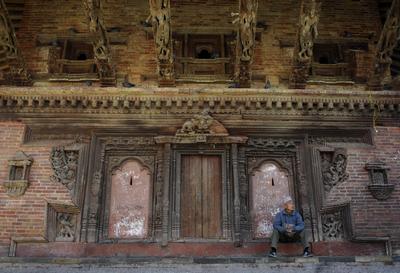Yet the recent election has delivered landslide gains to some political parties and produced massive setbacks for others, leading to a dramatic change in national politics. In particular, the Unified Communist Party of Nepal (a Maoist party), which had become the largest party in the first Assembly, has suffered a great loss in the recent election. Along with other Madhesi regional parties, it has advocated a transformative agenda for the Nepalese polity and society. Now, a critical question arises: have the people rejected this agenda for change?
The dissolution of the first Constituent Assembly can be attributed to a stagnation of political processes while drafting the constitution. Defining basic criteria for setting up new federal states, ensuring the inclusion of various marginalised groups and restructuring the governance of the unitary state were some of the key unresolved issues. Despite little progress on these issues, the first Constituent Assembly managed to set other historical milestones — among them, the abolition of 240 years of monarchy and the decision to become a secular state instead of a ‘Hindu Kingdom’. Furthermore, the first Assembly has furthered the representation of women in different spheres of public life such as the parliament, civil service and parastatal organisations, imposing a mandatory quota of 33 per cent. Yet the political process in Nepal is still volatile, and there are many challenges on the path to institutionalise the new secular, federal and republic democracy.
Results from the second election also suggest some key swings in the people’s outlook. The Maoist party was the major player in the first Assembly, while the Nepali Congress, the Communist Party of Nepal (CPN-UML) and the Madhesi parties were in second, third and fourth position, respectively. With the 2013 election, the representation of different parties in the assembly has changed. The size of the Maoist party has decreased from 37 per cent of the Assembly to 13 per cent. However, the Congress, which is regarded as a liberal party, has increased its share significantly to become the largest party. Similarly, the CPN-UML, which is seen to hold similar views to the Congress, has become the second-largest. The presence of regional parties (particularly those from Madhesi) has decreased significantly, and their representation is down from 83 members in 2008 to 60 in 2013.
The 2013 election result indicates that the Maoist party and the Madhesi regional parties have lost popularity while carrying out their agenda of political transformation, though the liberal parties have increased their support base. More importantly, the Rastriya Prajatantra Party Nepal, which continues to support the pro-Hindu monarchy, has increased its representation from four members in 2008 to 24 members in 2013.
What has caused all these changes? First, the Nepali people had high expectations of their political parties, particularly the Maoist party, which was regarded as revolutionary. These parties won much support, and were favoured in the first Assembly. However, they failed to deliver their promises to the people, and thus ordinary citizens lost sight of the difference between them and the liberal parties. Second, these groups were expected to work together in the Constituent Assembly. But rather than work together, the Maoist party experienced a split, and the Madhesi parties were also divided into several groups. Third, there was confusion during the election process about whether the election was for the parliament or the drafting of the constitution, as there was much forming and reforming of the government during the first Assembly — with four changes of government during this time. Finally, the parties advocating change did not give a clear indication of whether they would fight against class- or caste-based injustices. This confusion contributed to so-called higher-caste people moving to support the liberal camp, which appeared to be silent on the issue of caste.
At this point, it may be unfair to conclude that the Nepalese people have rejected the agenda for change. But they appear to be warning political parties to offer a clear vision and improve their governance. None of the parties has a majority in the second Assembly, and the message is clear to all parties: they should work together to shape the future of the country. The current Assembly is much more likely to produce a new constitution given that two parties — the Congress and CPN-UML — together constitute nearly a two-thirds majority. However, the constitution-making process needs to ensure that key political forces, namely Maoist and regional Madhesi parties, have their say — or else the country could head towards further conflict and political instability.
Binod Chapagain is a PhD candidate at the School of Archaeology and Anthropology, Australian National University.
Ramesh Sunam is a PhD candidate at the Crawford School of Public Policy, Australian National University.


Great analysis!
It is yet hard to say even after centuries whether the French Revolution has been successful or not. Francis Fukuyama’s best selling and most read book of 1992 “The End of History” hastily concluded that the liberal democracy was the final stage of political development. Yet it was not to be. Based on these experiences, it is too early to comment whether the so called “agenda for change ” and “New Nepal” have failed. Nonetheless, what is evolving is the dirty politics of ethnicity constructed by ethnic elites and lies of politicians seem to be falling apart. And one notable point is: an argument based on the result of this election, shows that it is not only the high-caste people who are supporting the liberal camp because the total population of high caste is around 30 per cent (number of voters may not be even 30 per cent) where as the liberal camp has garnered more than 63 per cent of the vote cast.
A very minute study conducted by writers.and I too agree and believe that we Nepalese people have not rejected the agenda for change. But we are warning political parties to offer a clear vision and improve their governance.